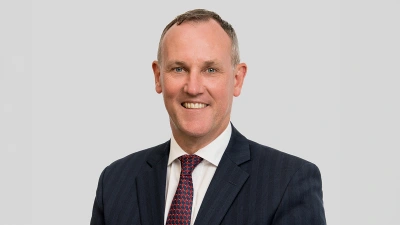Trustee licensing requires sharper focus
APRA believes there will be about 400 trustees licensed by the close-off date, says its general manger south-west region Stephen Glenfield.
“APRA is about halfway through the transition period and we were concerned about the pace of licensing,” he says.
“We now have more than 50 licence applications in various states of assessment and when the dust settles, we estimate there will be about 400 licences issued.”
Glenfield says that when the licensing process was started there were an estimated 1000 trustees.
One of the reasons why licences are taking longer to issue is due to many applications failing to meet the guidelines, especially regarding risk management strategy and risk management plans requirements.
“The risk strategy and plans are a function of assessing risk in the fund,” he says.
“People are not benchmarking their application against the guidance lines on the APRA website or against the Frequently Asked Questions part of the site.”
Glenfield says funds have listed the risk management strategy but they are not documenting the risk management plans, which should then be a public document that is available to the members.
These plans will need continually updating as the risks change in the fund.
“But the additional work outweighs the effort,” he says.
The plans will have to include a high level of transparency as Glenfield says they are expected to be used as part of a member’s choice decisions.
“So the plans must make sense, they must be reviewed annually and updated regularly,” he says.
“It will be an important aspect of the fund’s operation.”
Failure to report a breach in the risk framework of a fund will be regarded by APRA as a serious event.
The regulator has hinted that it will remove licences for breaches or the lack of reporting.
“The compliance of these obligations will put more pressure on trustees,” Glenfield says.
“Some may feel APRA is being pedantic over these regulations, but these are obligations put on APRA (by law) which, in turn, puts obligations on the trustees.
“The framework to obtain a licence needs to be embedded in the fund’s day-to-day operations and the documents have to be live documents used in day-to-day operations.”
If the risk documents have to be changed, the amendments have to be sent to APRA, he says.
This includes areas such as when a board member no longer becomes a “fit and proper” person to be a trustee of the fund.
“APRA will revisit these policies to see if they reflect the operations of the fund,” Glenfield says.
“Trustees will need to have a sharper focus on compliance in the future, with formal compliance and audit processes.”
If a fund reports any breaches early, APRA will take “a benign view”, he says, and the regulator will focus on how the risk strategies detected the event.
“In future it will be less about checking balance sheets, but more about compliance,” Glenfield says.
He adds that when trustees have become licensed, their funds can expect a review by APRA every two years.
Recommended for you
In this week’s special episode of Relative Return Unplugged, we present shadow treasurer Angus Taylor’s address at Momentum Media’s Election 2025 event, followed by a Q&A covering the Coalition’s plans for the financial services sector.
In this week’s episode of Relative Return Unplugged, AMP chief economist Shane Oliver joins the show to unravel the web of tariffs that US President Donald Trump launched on trading partners and take a look at the way global economies are likely to be impacted.
In this episode of Relative Return, host Laura Dew is joined by Andrew Lockhart, managing partner at Metrics Credit Partners, to discuss the attraction of real estate debt and why it can be a compelling option for portfolio diversification.
In this week’s episode of Relative Return Unplugged, AMP’s chief economist, Shane Oliver, joins us to break down Labor’s budget, focusing on its re-election strategy and cost-of-living support, and cautioning about the long-term impact of structural deficits, increased government spending, and potential risks to productivity growth.










